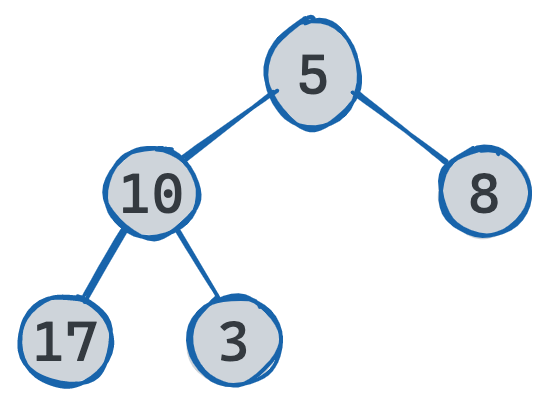Community
Start a ThreadNotifications
Subscribe You’re not receiving notifications from this thread.Sum Right Side Leaves (Main Thread)
Here is the interview question prompt, presented for reference.
Finding the Sum of Right Leaves in a Binary Tree
Imagine a family tree, but instead of tracking your relatives, it's tracking numbers. Each "person" in this tree has at most two "children," and some have none. We call these childless nodes "leaves," and your task is to find the sum of leaves that are on the right side of their "parent."
Visualizing the Problem

In this illustration, the right leaves are 8 and 3. Their sum would be 11.
Preparing the Groundwork
Before diving into the solution, let's first establish what a Node in this tree looks like. We assume all nodes, even the root, follow this structure:
class Node {
constructor(val) {
this.value = val;
this.left = null;
this.right = null;
}
}
Constraints to Keep in Mind
- The tree has a maximum length of 100,000 nodes.
- All node values are integers, ranging from -2000 to 2000.
- The function should run in O(n) time complexity.
- The space complexity should be O(n) considering the call stack.
Function Signature
You need to implement the following function:
function sumOfRightLeaves(root) {
return root;
}
Understanding the Challenge
The function takes in the root node of the tree as an argument. Your goal is to traverse the tree and sum up all the right leaves.
So, how do we do that? Let's dive into the solution next.
You can see the full challenge with visuals at this link.
Challenges • Asked about 8 years ago by Team AlgoDaily
This is the main discussion thread generated for Sum Right Side Leaves.